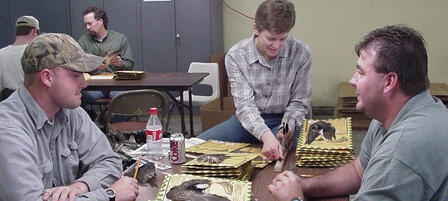“Wing Bee” Is A Central Flyway Tradition

HARTFORD – Everyone has heard of, and probably participated in, a spelling bee. But did you know there is such a thing as a wing bee? There is and it is well-known among waterfowl biologists. While it’s not a competition, the wing bee is part of the annual waterfowl harvest monitoring process, and each year it brings professional biologists and enforcement officers to a single location to analyze approximately 18,000 duck wings and 6,000 goose tail fans.
This year marks the 52nd year of the Central Flyway Wing Bee, which has been hosted for the last 25 years by the by Kansas Department of Wildlife, Parks and Tourism and Flint Hills National Wildlife Refuge.
Wing bee participants will gather in Hartford on Feb. 16-19, 2016 to examine wings and tail feathers in order to estimate the species, age, and sex of waterfowl harvested in the Central Flyway. Each year since 1964, a sample of waterfowl hunters have been asked to send a wing from each duck and primary wing feathers and tail from each goose they harvested.
The task of reading or classifying the large sample of wings and tails requires an extensive cadre of willing, dedicated and often highly experienced workers. In a typical year, about 40 biologists and enforcement officers from state wildlife agencies, the U.S. Fish and Wildlife Service and universities assemble for four days to "read" wings. In the 25 years that Kansas has hosted the wing bee, more than half-a-million parts have been analyzed.
-30-







